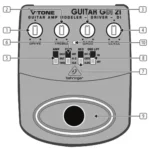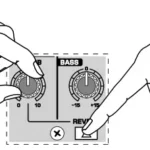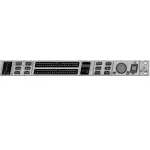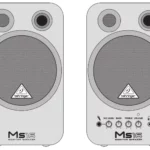
Quick Start Guide

PRO-1
Analog Synthesizer with Dual VCOs, 3 Simultaneous Waveforms, 4-Pole VCF, Extensive Modulation Matrix, 16-Voice Poly Chain and Eurorack Format
Important Safety Instructions
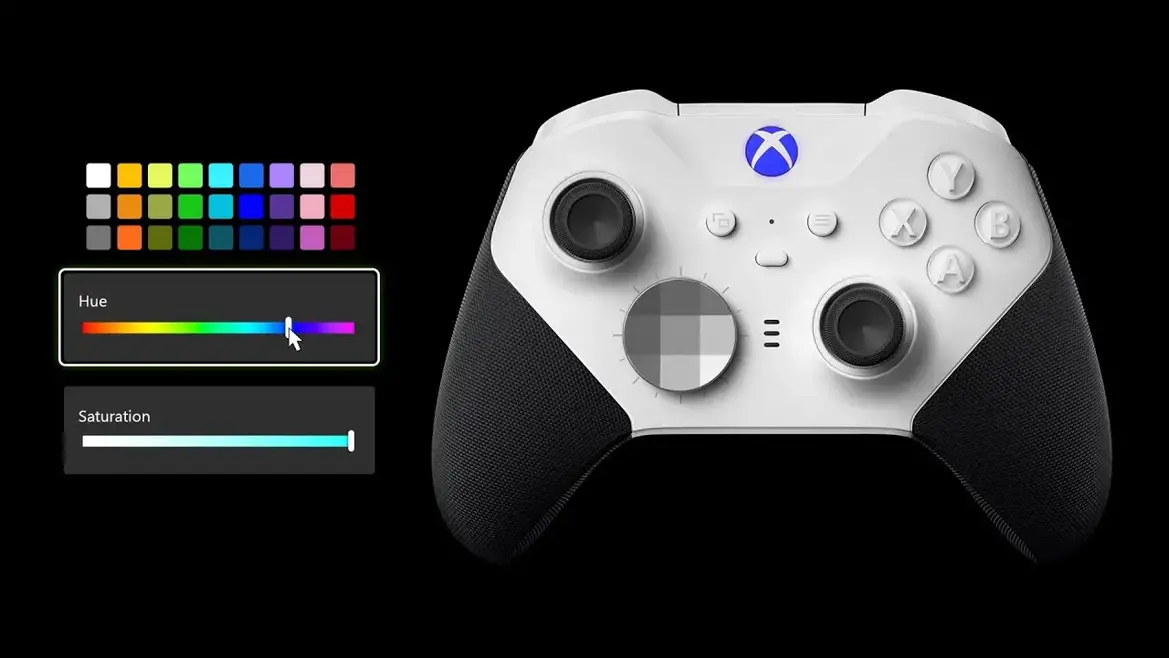
 Terminals marked with this symbol carry an electrical current of sufficient magnitude to constitute a risk of electric shock. Use only high-quality professional speaker cables with ¼” TS or twist-locking plugs pre-installed. All other installation or modifications should be performed only by qualified personnel.
Terminals marked with this symbol carry an electrical current of sufficient magnitude to constitute a risk of electric shock. Use only high-quality professional speaker cables with ¼” TS or twist-locking plugs pre-installed. All other installation or modifications should be performed only by qualified personnel.
 This symbol, wherever it appears, alerts you to the presence of uninsulated dangerous voltage inside the enclosure – voltage that may be sufficient to constitute a risk of shock.
This symbol, wherever it appears, alerts you to the presence of uninsulated dangerous voltage inside the enclosure – voltage that may be sufficient to constitute a risk of shock.
 This symbol, wherever it appears, alerts you to important operating and maintenance instructions in the accompanying literature. Please read the manual.
This symbol, wherever it appears, alerts you to important operating and maintenance instructions in the accompanying literature. Please read the manual.
 Caution
Caution
To reduce the risk of electric shock, do not remove the top cover (or the rear section). No user-serviceable parts inside. Refer servicing to qualified personnel.
 Caution
Caution
To reduce the risk of fire or electric shock, do not expose this appliance to rain and moisture. The apparatus shall not be exposed to dripping or splashing liquids and no objects filled with liquids, such as vases, shall be placed on the apparatus.
 Caution
Caution
These service instructions are for use by qualified service personnel only. To reduce the risk of electric shock do not perform any servicing other than that contained in the operation instructions.
Repairs have to be performed by qualified service personnel.
- Read these instructions.
- Keep these instructions.
- Heed all warnings.
- Follow all instructions.
- Do not use this apparatus near water.
- Clean only with dry cloth.
- Do not block any ventilation openings. Install in accordance with the manufacturer’s instructions.
- Do not install near any heat sources such as radiators, heat registers, stoves, or other apparatus (including amplifiers) that produce heat.
- Do not defeat the safety purpose of the polarized or grounding-type plug. A polarized plug has two blades with one wider than the other. A grounding-type plug has two blades and a third grounding prong. The wide blade or the third prong are provided for your safety. If the provided plug does not fit into your outlet, consult an electrician for the replacement of the obsolete outlet.
- Protect the power cord from being walked on or pinched particularly at plugs, convenience receptacles, and the point where they exit from the apparatus.
- Use only attachments/accessories specified by the manufacturer.
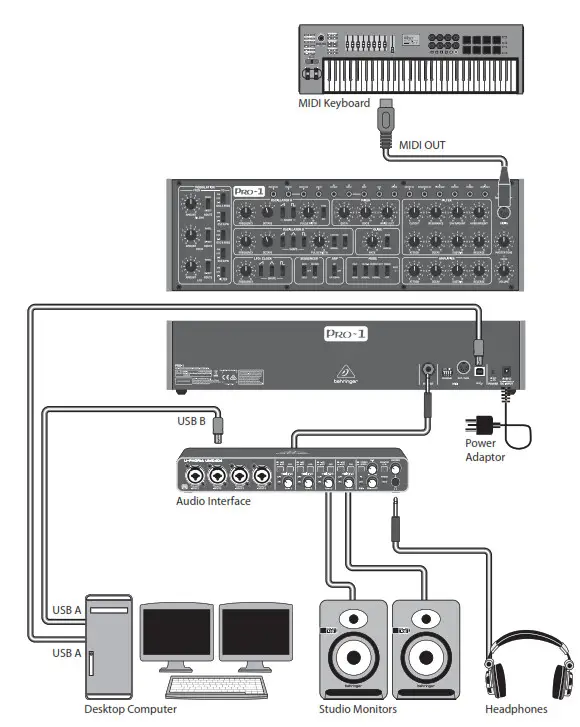 Use only with the cart, stand, tripod, bracket, or table specified by the manufacturer, or sold with the apparatus. When a cart is used, use caution when moving the cart/ apparatus combination to avoid injury from tip-over.
Use only with the cart, stand, tripod, bracket, or table specified by the manufacturer, or sold with the apparatus. When a cart is used, use caution when moving the cart/ apparatus combination to avoid injury from tip-over.- Unplug this apparatus during lightning storms or when unused for long periods of time.
- Refer all servicing to qualified service personnel. Servicing is required when the apparatus has been damaged in any way, such as power supply cord or plug is damaged, liquid has been spilled or objects have fallen into the apparatus, the apparatus has been exposed to rain or moisture, does not operate normally, or has been dropped.
- The apparatus shall be connected to a MAINS socket outlet with a protective earthing connection.
- Where the MAINS plug or an appliance coupler is used as the disconnect device, the disconnect device shall remain readily operable.
 Correct disposal of this product: This symbol indicates that this product must not be disposed of with household waste, according to the WEEE Directive (2012/19/EU) and your national law. This product should be taken to a collection center licensed for the recycling of waste electrical and electronic equipment (EEE). The mishandling of this type of waste could have a possible negative impact on the environment and human health due to potentially hazardous substances that are generally associated with EEE. At the same time, your cooperation in the correct disposal of this product will contribute to the efficient use of natural resources. For more information about where you can
Correct disposal of this product: This symbol indicates that this product must not be disposed of with household waste, according to the WEEE Directive (2012/19/EU) and your national law. This product should be taken to a collection center licensed for the recycling of waste electrical and electronic equipment (EEE). The mishandling of this type of waste could have a possible negative impact on the environment and human health due to potentially hazardous substances that are generally associated with EEE. At the same time, your cooperation in the correct disposal of this product will contribute to the efficient use of natural resources. For more information about where you can
take your waste equipment for recycling, please contact your local city office or your household waste collection service.- Do not install in a confined space, such as a bookcase or similar unit.
- Do not place naked flame sources, such as lighted candles, on the apparatus.
- Please keep the environmental aspects of battery disposal in mind. Batteries must be disposed of at a battery collection point.
- Use this apparatus in tropical and/or moderate climates.
LEGAL DISCLAIMER
Music Tribe accepts no liability for any loss which may be suffered by any person who relies either wholly on or in part upon any description, photograph or statement contained herein. Technical specifications, appearances, and other information are subject to change without notice.
All trademarks are the property of their respective owners. Midas, Klark Teknik, Lab Gruppen, Lake, Tannoy, Turbosound, TC Electronic, TC Helicon, Behringer, Bugera, Auratone, and Coolaudio are trademarks or registered trademarks of Music Tribe Global Brands Ltd.
© Music Tribe Global Brands Ltd. 2019
All rights reserved.
LIMITED WARRANTY
For the applicable warranty terms and conditions and additional information regarding Music Tribe’s Limited
Warranty, please see complete details online at musictribe.com/warranty
Zhongshan Eurotec
Electronics Limited
No. 10 Wanmei Road, South China
Modern Chinese Medicine Park,
Nanlang Town, 528451, Zhongshan
City, Guangdong Province, China
PRO-1 Synthesizer Hook-up
Step 1: Hook-Up
Studio System
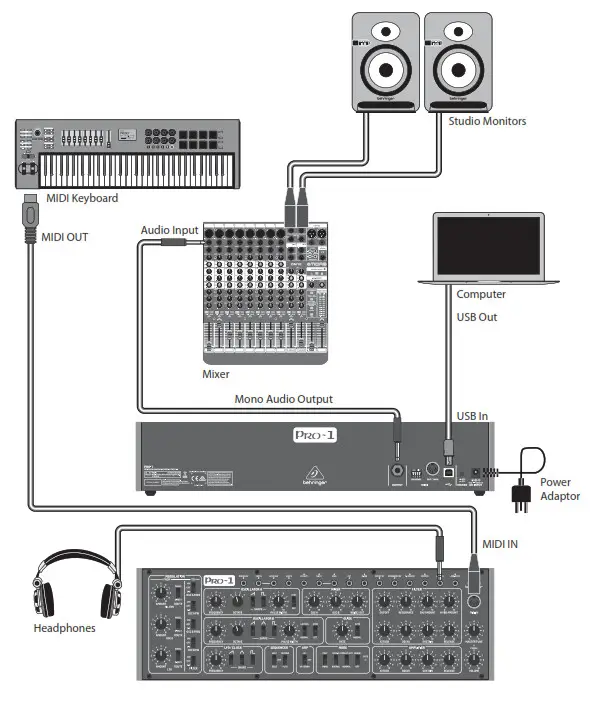
Band/Practice System
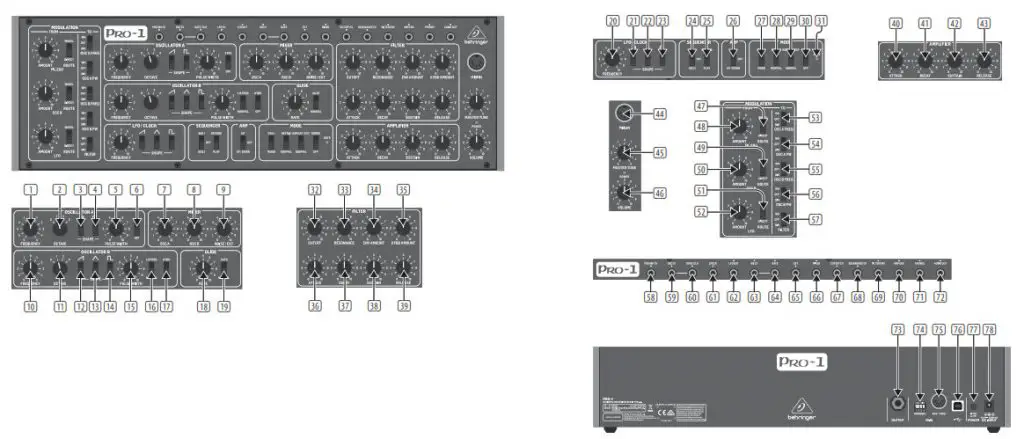
Live System
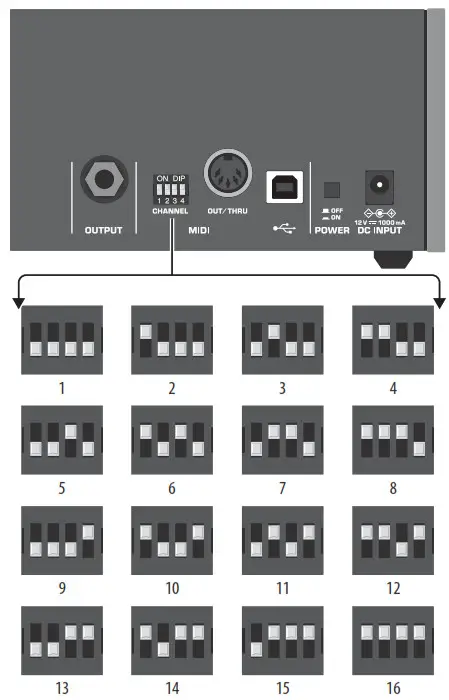
PRO-1 Synthesizer Controls
Step 2: Controls
Oscillator A Section
- FREQUENCY – Adjusts the frequency of oscillator A.
- OCTAVE – Transposes the frequency of oscillator A over a four-octave range.
- SAWTOOTH SHAPE – Enables a full-level wave shape containing all harmonics.
- PULSE SHAPE – Turns on the pulse wave whose harmonic content depends on the pulse width control.
- PULSE WIDTH – Changes the harmonic content of the pulse wave by setting pulse wave shape from 0 to 100%.
- SYNC – Forces oscillator A to follow oscillator B in hard synchronization.
MIXER - OSCILLATOR A – Level control.
- OSCILLATOR B – Level control.
- NOISE/EXT – Control of white noise or external input.
When an external input is patched it bypasses the white noise circuit and is injected into the filter input.
OSCILLATOR B - FREQUENCY – Adjusts the frequency of oscillator B.
- OCTAVE – Transposes the frequency of oscillator B over a four-octave range.
- SAWTOOTH SHAPE – Switch enables a full-level wave shape containing all harmonics.
- TRIANGLE SHAPE – Switch turns on a wave shape that is centered at the ground so as not to offset the modulation destination.
- PULSE SHAPE – Engages the pulse wave, which depends on the pulse width control to adjust harmonic content.
- PULSE WIDTH – Changes the harmonic content of the pulse wave by setting pulse wave shape from 0 to 100%.
- NORMAL/LO FREQ – Extends oscillator B range to the sub-audio frequency range (around 60 Hz and below).
- OFF/KYBD – A switch that allows keyboard control or independent use.
GLIDE - RATE – Sets the rate of glide (portamento) between notes.
- AUTO/NORMAL – In the NORMAL position glide operates in a traditional way. In the AUTO position, the sound will glide only when a new key is pressed with the previous key still held. This enables one-handed pitch bending.
LFO, SEQUENCER, ARP, and MODE settings - LFO FREQUENCY – Varies the Low-Frequency Oscillator range from approximately 0.1 to 30 Hz.
- SAWTOOTH SHAPE – Switch enables a full-level sawtooth wave shape.
- TRIANGLE SHAPE – The switch turns on a wave shape that is centered at the ground so as not to offset the modulation destination.
- PULSE SHAPE – Turns on the pulse wave.
- SEQ1/OFF/SEQ2 – 2 x 64-note sequencer (SEQ1 and SEQ2).
- RECORD/PLAY – Will either record or playback a sequence determined by the position of the SEQ1, SEQ2 OFF switch.
- ARP – The arpeggiator switch has 3 positions, UP (ascending only), UP/DOWN (ascending and descending) or OFF.
- POLY/MONO – Turns poly mode on when the switch is in the POLY position.
- NORMAL/RETRIG – Switch selects the envelope generator triggering mode. Normal means low-note priority with single triggering. When the switch is in the RETRIG position every new keypress will retrigger the gate, i.e. the last note played will be heard.
- REPEAT/EXT NORMAL – When switched on this function repeatedly gates the envelope generators at a rate controlled by the LFO/Clock FREQUENCY control. Engaging this switch also enables the top panel GATE/CLK IN input.
- DRONE – When activated this pushes the GATE on, holding the envelopes at their sustain level. DRONE has priority over REPEAT.
- GATE – This LED indicates the GATE operation in the various different keyboard modes and also shows external GATE inputs if present.
Filter Section - CUTOFF – Adjusts the cutoff frequency of the VCF.
- RESONANCE – Adjusts the resonance of the filter. This emphasizes the frequencies around the cutoff point.
- ENV AMOUNT – Sets the amount of ADSR filter envelope CV controlling the filter cutoff frequency.
- KYBD AMOUNT – Sets the amount of KYBD CV controlling the filter cutoff frequency.
- ATTACK – Controls the attack time of the filter envelope.
- DECAY – Controls the decay time of the filter envelope.
- SUSTAIN – Controls the sustain level of the filter envelope.
- RELEASE – Controls the release time of the filter envelope.
Amplifier Section (applied to the VCA) - ATTACK – Controls the attack time of the VCA envelope.
- DECAY – Controls the decay time of the VCA envelope.
- SUSTAIN – Controls the sustain level of the VCA envelope.
- RELEASE – Controls the release time of the VCA envelope.
- MIDI IN – Accepts incoming MIDI data from the selected MIDI channel.
- MASTER TUNE – Adjusts tuning.
- VOLUME – Controls the output level of the synthesizer.
Modulation Section - FIL ENV ROUTE – This assigns the modulation source to either the WHEEL or DIRECT path. DIRECT is mixed and applied directly to the selected target, WHEEL is mixed and then sent to the MOD wheel which then changes the depth of modulation.
- FIL ENV AMOUNT – Determines the amount of modulation mixed into the WHEEL or DIRECT path by the adjacent ROUTE switch.
- OSC B ROUTE – This assigns the modulation source to either the WHEEL or DIRECT path. DIRECT is mixed and applied directly to the selected target, WHEEL is mixed and then sent to the MOD wheel which then changes the depth of modulation.
- OSC B AMOUNT – Determines the amount of modulation mixed into the WHEEL or DIRECT path by the adjacent ROUTE switch.
- LFO ROUTE – This assigns the modulation source to either the WHEEL or DIRECT path. DIRECT is mixed and applied directly to the selected target, WHEEL is mixed and then sent to the MOD wheel which then changes the depth of modulation.
- LFO AMOUNT – Determines the amount of modulation mixed into the WHEEL or DIRECT paths by the adjacent ROUTE switches.
- OSC A FREQ – The switch selects either OFF, WHEEL or DIRECT for the modulation route.
- OSC A PW – The switch selects either OFF, WHEEL or DIRECT for the modulation route.
- OSC B FREQ – The switch selects either OFF, WHEEL or DIRECT for the modulation route.
- OSC B PW – The switch selects either OFF, WHEEL or DIRECT for the modulation route.
- FILTER – The switch selects either OFF, WHEEL or DIRECT for the modulation route.
Patch Bay - MOD WH CV – Input for mod wheel CV.
- OSC CV – OSC pitch CV.
- GATE/CLK – External GATE/CLOCK input.
- LFO CV – LFO rate CV.
- LFO OUT – LFO out CV.
- KB CV – 1V/octave for control of external equipment.
- GATE – Gate CV out of the arpeggiator or sequencer.
- EXT – Allows external audio input to be mixed and processed by the PRO-1’s filter and amplifier.
- MIXER – Output of mixer.
- CUTOFF CV – VCF cutoff frequency CV.
- RESONANCE CV – VCF resonance CV.
- FILTER ENV – Filter envelope output.
- AMP ENV – Amplifier envelope output.
- PHONES – Stereo 1/8″ headphone socket.
- AUDIO OUT – Mono 1/8″ Output of PRO-1.
PRO-1 Rear - OUTPUT – Connect to a mixer or audio interface using a ¼” (6.35 mm) mono jack cable. Remember to turn your monitors/loudspeakers on last when turning on your
system and turn your monitors/loudspeakers off first when turning your system off.
- MIDI CHANNEL SELECTION – Move the four dip switches to select the incoming MIDI channel for the synthesizer.
- MIDI OUT/THRU – The 5-Pin MIDI DIN connector is used to pass through MIDI data received at the MIDI INPUT and USB input, as well as the sequencer or arpeggiator’s notes.
- USB PORT – Connects to a computer via standard USB cable. The PRO-1 will display in your DAW as a class-compliant USB MIDI device, capable of sending and receiving MIDI information.
- POWER SWITCH – Turns the synthesizer on and off. Make all audio connections before powering on.
- POWER INPUT – Connect the supplied power supply only.
Specifications
| Synthesizer Architecture | |
| Number of voices | Monophonic |
| Type of oscillators | 2 x 3340 |
| Type | Analog |
| Oscillators | 2 (32.70 Hz to 8372.02 Hz across 4 ranges) |
| LFO | 1 (0.08 Hz to 30 Hz) |
| VCF | 1 x 4-pole low pass (24 dB/octave slope) |
| Envelopes | VCF, VCA |
| Connectivity | |
| Output | ¼” TS, unbalanced max. +12.0 dBu |
| Headphones | 1/8″ TRS, unbalanced max. 7.5 mW@32 Ohm |
| Headphones output impedance | 8 Ω |
| MIDI In/thru | 2 x 5-pin DIN/ 16 channels |
| USB (MIDI) | USB 2.0, type B |
| USB | |
| Type | Class-compliant USB 2.0, type B |
| Supported operating systems | Windows 7 or higher/ Mac OS X 10.6.8 or higher |
| Oscillator Section | |
| Controls | Frequency (OSC A&B): 0 to 10 |
| Octave 0, 1, 2 or 3 | |
| Pulse Width (OSC A&B) 0 to 10 | |
| Switches | Shape (OSC A&B): Sawtooth, Pulse, |
| and Triangular (OSC B only) | |
| OSC A sync: on/off | |
| OSC B LO Freq or Normal | |
| OSC B KYBD or Off | |
| Modulation Section | |
| Controls | From Filt env 0 to 10 |
| From OSC B 0 to 10 | |
| From LFO 0 to 10 | |
| Switches | From Filt env: pitch bend wheel or direct |
| From Osc B: pitch bend wheel or direct | |
| From LFO : pitch bend wheel or direct | |
| To OSC A Freq: pitch bend wheel, off or direct | |
| To OSC A PW: pitch bend wheel, off or direct | |
| To OSC B Freq: pitch bend wheel, off or direct | |
| To OSC B PW: pitch bend wheel, off or direct | |
| To Filter: pitch bend wheel, off or direct | |
| Mixer Section | |
| Controls | OSC A, B and Noise/External input |
| Glide Section | |
| Controls | Rate: 0 to 10 |
| Switches | Auto or Normal |
| LFO/Clock Section | |
| Controls | Frequency 0 to 10 |
| Switches | Sawtooth, Triangle and Pulse |
| Sequencer Section | |
| Switches | Seq 1, off or Seq 2 (64 note) |
| Record or Play | |
| Arpeggiate Section | |
| Switches | Up, off or up/down |
| Mode Section | |
| Switches | Poly or mono |
| Retrig or normal | |
| Repeat/ext or normal | |
| Drone or off | |
| LED | Gate |
| Filter Section | |
| Controls | Cutoff frequency: 0 to 10 |
| Resonance: 0 to 10 | |
| Env amount: 0 to 10 | |
| KYBD amount: 0 to 10 | |
| Attack: 2.0 mS to 6.5 S | |
| Decay: 2.0 mS to 15 S | |
| Sustain: 0 to 5 V | |
| Release: 2.0 mS to 25 S | |
| Amplifier Section | |
| Controls | Attack: 2.0 mS to 6.5 S |
| Decay: 2.0 mS to 15 S | |
| Sustain: 0 to 5 V | |
| Release: 2.0 mS to 25 S | |
| Output Section | |
| Controls | Volume: 0 to 10 |
| Master tune -5 to +5 | |
| LED | Power |
| Inputs (TS 3.5 mm) | |
| Mod Wh CV | 0 V to +5 V |
| OSC CV | -5 V to +5 V |
| Gate/Clk | More than 2 V (envelope triggers @ 2V) |
| LFO CV | -5 V to +5 V |
| Ext | Input impedance: 85 Kohm |
| Cutoff CV | 0 V to +5 V |
| Resonance CV | 0 V to +5 V |
| Outputs (TS 3.5 mm) | |
| LFO out | Triangle: +/-2.5 V, Pulse: +4 V, Sawtooth: +5 V |
| KB CV | 0 V to +7 V |
| Gate | 0 V / +5 V |
| Mixer | 1/8″ TRS, unbalanced max. +20.0 dBu |
| Filter env | 0 V to +5 V |
| Amp env | 0 V to +5 V |
| Phones | Signal output |
| Audio out | Signal output |
| Power Requirements | |
| External power adaptor | 12 V DC |
| Power consumption | 8 W maximum |
| Environmental | |
| Operating temperature range | 5˚C to 40˚C (41˚F to 104˚F) |
| Physical | |
| Dimensions (H x W x D) | 95 x 424 x 136 mm (3.7 x 16.7 x 5.4 “) |
| Weight | 1.8 kg (4.0 lbs) |
| Shipping weight | 2.7 kg (5.9 lbs) |
| Eurorack HP | 80 |
Other important information
- Register online.
Please register your new Music Tribe equipment right after you purchase it by visiting Behringer. com. Registering your purchase using our simple online form helps us to process your repair claims more quickly and efficiently. Also, read the terms and conditions of our warranty, if applicable. - Malfunction. Should your
Music Tribe Authorized Reseller not be located in your vicinity, you may contact the Music Tribe Authorized Fulfiller for your country listed under “Support” at behringer.com. Should your country not be listed, please check if your problem can be dealt with by our “Online Support” which may also be found under “Support” at behringer.com. Alternatively, please submit an online warranty claim at behringer. com BEFORE returning the product. - Power Connections.
Before plugging the unit into a power socket, please make sure you are using the correct mains voltage for your particular model. Faulty fuses must be replaced with fuses of the same type and rating without exception.
FEDERAL COMMUNICATIONS COMMISSION COMPLIANCE INFORMATION

Responsible Party Name: Music Tribe Commercial NV Inc.
Address: 5270 Procyon Street
Las Vegas, NV 89118 USA
Phone Number: +1 702 800 8290
PRO-1
complies with the FCC rules as mentioned in the following paragraph: This equipment has been tested and found to comply with the limits for a Class B digital device, pursuant to part 15 of the FCC Rules. These limits are designed to provide reasonable protection against harmful interference in a residential installation. This equipment generates, uses, and can radiate radio frequency energy and, if not installed and used in accordance with the instructions, may cause harmful interference to radio communications. However, there is no guarantee that interference will not occur in a particular installation. If this equipment does cause harmful interference to radio or television reception, which can be determined by turning the equipment off and on, the user is encouraged to try to correct the interference by one or more of the following measures:
- Reorient or relocate the receiving antenna.
- Increase the separation between the equipment and receiver.
- Connect the equipment into an outlet on a circuit different from that to which the receiver is connected.
- Consult the dealer or an experienced radio/TV technician for help.
This device complies with Part 15 of the FCC rules. Operation is subject to the following two conditions:
(1) this device may not cause harmful interference, and
(2) this device must accept any interference received, including interference that may cause undesired operation.
Important information:
Changes or modifications to the equipment not expressly approved by Music Tribe can void the user’s authority to use the equipment.
We Hear You

